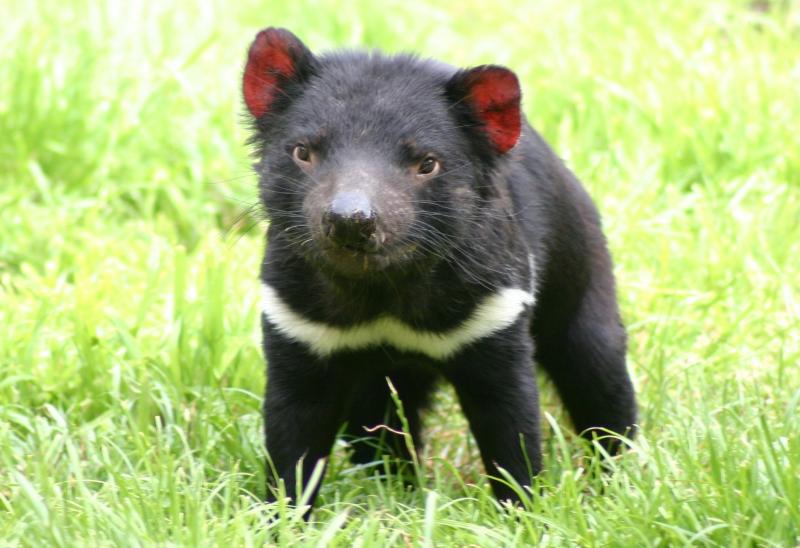 In honor of Australia Day I thought it would be fitting to write about one of their most beloved species, the Tasmanian devil. Immortalized as the spinning, incoherent cartoon character, the survival of the real Tasmanian devil is in peril. A communicative disease called Devil Facial Tumor Disease (DFTD) is decimating the devil population of Tasmania. As researchers race to understand the etiology behind DFTD the devils face an uncertain future.
In honor of Australia Day I thought it would be fitting to write about one of their most beloved species, the Tasmanian devil. Immortalized as the spinning, incoherent cartoon character, the survival of the real Tasmanian devil is in peril. A communicative disease called Devil Facial Tumor Disease (DFTD) is decimating the devil population of Tasmania. As researchers race to understand the etiology behind DFTD the devils face an uncertain future.
Devil Facial Tumor Disease was first documented in 1996 in northeastern Tasmanian. The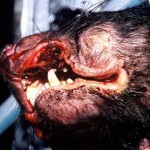 disease is characterized by large, fast-growing cancerous tumors that are found around the face and inside the mouth. Interestingly, it is one of only three contagious cancers that have been identified to date. Tumors make it extremely difficult for devils to locate food and eat, resulting in starvation and death. There is a 100% mortality rate in infected individuals; populations in which DFTD is found have experienced up to a 95% decline. Currently, DFTD has been found in more than 60% of the overall Tasmanian devil population.
disease is characterized by large, fast-growing cancerous tumors that are found around the face and inside the mouth. Interestingly, it is one of only three contagious cancers that have been identified to date. Tumors make it extremely difficult for devils to locate food and eat, resulting in starvation and death. There is a 100% mortality rate in infected individuals; populations in which DFTD is found have experienced up to a 95% decline. Currently, DFTD has been found in more than 60% of the overall Tasmanian devil population.
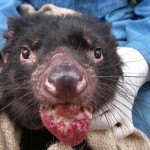 As shown by the work of Pearse and Swift in 2006, DFTD is not caused by a bacteria or virus, but is transmitted via cell implantation. Cancerous cells are passed through bites received during mating or competition over food. Although most commonly observed in post-pubertal individuals 2 years of age and older, DFTD has been found in devils as young as 1 year old. Fortunately, DFTD has not been observed in other species of carnivorous marsupial that share habitat or food items with the devil.
As shown by the work of Pearse and Swift in 2006, DFTD is not caused by a bacteria or virus, but is transmitted via cell implantation. Cancerous cells are passed through bites received during mating or competition over food. Although most commonly observed in post-pubertal individuals 2 years of age and older, DFTD has been found in devils as young as 1 year old. Fortunately, DFTD has not been observed in other species of carnivorous marsupial that share habitat or food items with the devil.
Scientists around the world have feverishly worked to eliminate DFTD to no avail. However, great advances have been made in the last 10 years to better understand the disease. Researchers from the Wellcome Trust Sanger Institute and Illumina have been successful in mapping a draft genome sequence for the devils. Dr. Kathy Belov and colleagues at the University of Sydney have identified two genetically distinct populations of devils in which one may be resistant to DFTD; this would explain why DFTD has only been seen in the northeast and not northwest. In addition, Dr. Elizabeth Murchison from the Australian National University has discovered that DFTD originated from Schwann cells, cells that protect neurons. Moreover, this work has lead to the identification of a genetic marker that has the potential to accurately diagnose DFTD in those individuals not yet showing clinical signs of the disease.
However, great advances have been made in the last 10 years to better understand the disease. Researchers from the Wellcome Trust Sanger Institute and Illumina have been successful in mapping a draft genome sequence for the devils. Dr. Kathy Belov and colleagues at the University of Sydney have identified two genetically distinct populations of devils in which one may be resistant to DFTD; this would explain why DFTD has only been seen in the northeast and not northwest. In addition, Dr. Elizabeth Murchison from the Australian National University has discovered that DFTD originated from Schwann cells, cells that protect neurons. Moreover, this work has lead to the identification of a genetic marker that has the potential to accurately diagnose DFTD in those individuals not yet showing clinical signs of the disease.
Conservation programs have been instrumental in preserving healthy devils in captive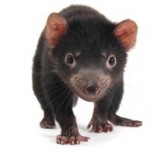 environments. The Devil Ark is one of many facilities located in Tasmania that have a healthy captive devil breeding program. It is the intention of the Ark and others to increase captive populations so that once DFTD has been eradicated or controlled there will be animals to be reintroduced into Tasmania.
environments. The Devil Ark is one of many facilities located in Tasmania that have a healthy captive devil breeding program. It is the intention of the Ark and others to increase captive populations so that once DFTD has been eradicated or controlled there will be animals to be reintroduced into Tasmania.
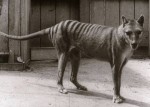 The Tasmanian devil is struggling to survive. Because of DFTD, habitat loss, road kills, persecution, and introduced predators like foxes and dogs, the future of the devil is uncertain. Regardless of where we live, we can all help raise awareness and funds to support research and conservation projects. If you are fortunate enough to share habitat with Tasmanian devils, please learn to respect and coexist. Be proud of this feisty little Aussie and fight hard to ensure that they will be here for generations to come. For the rest of us, we need to continue to educate others on the plight of the devil and understand how close we stand to losing one of the most iconic species in the world. Monetary donations to scientific research and conservation programs are always needed. Time is not a luxury we have, we simply cannot just stand by and watch the Tasmanian devil go the way of the Thylacine.
The Tasmanian devil is struggling to survive. Because of DFTD, habitat loss, road kills, persecution, and introduced predators like foxes and dogs, the future of the devil is uncertain. Regardless of where we live, we can all help raise awareness and funds to support research and conservation projects. If you are fortunate enough to share habitat with Tasmanian devils, please learn to respect and coexist. Be proud of this feisty little Aussie and fight hard to ensure that they will be here for generations to come. For the rest of us, we need to continue to educate others on the plight of the devil and understand how close we stand to losing one of the most iconic species in the world. Monetary donations to scientific research and conservation programs are always needed. Time is not a luxury we have, we simply cannot just stand by and watch the Tasmanian devil go the way of the Thylacine.
You can find more information about the Tasmanian Devil and DFTD at the following links:
